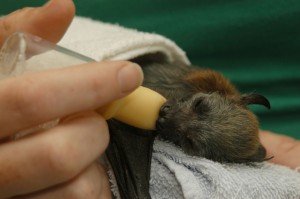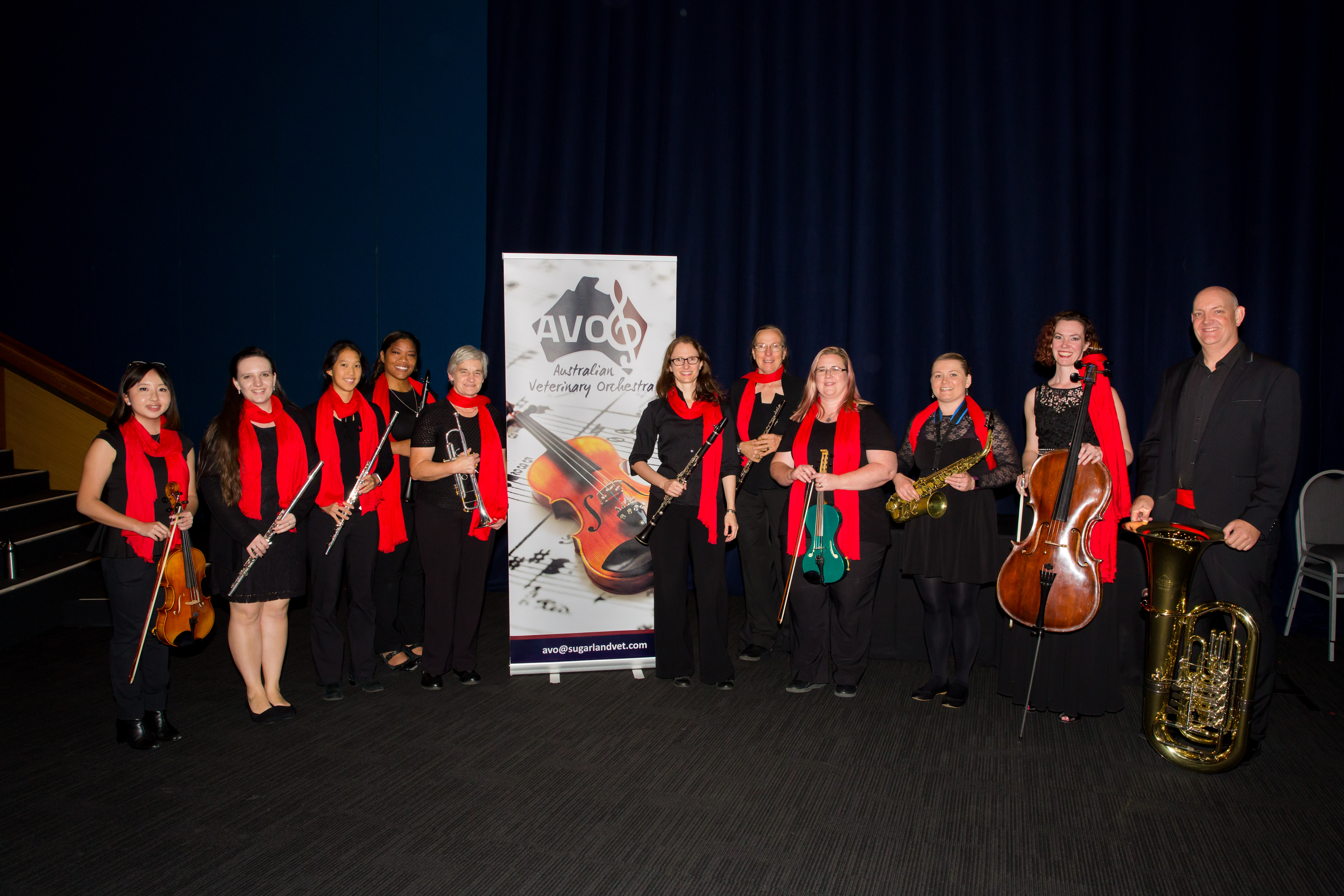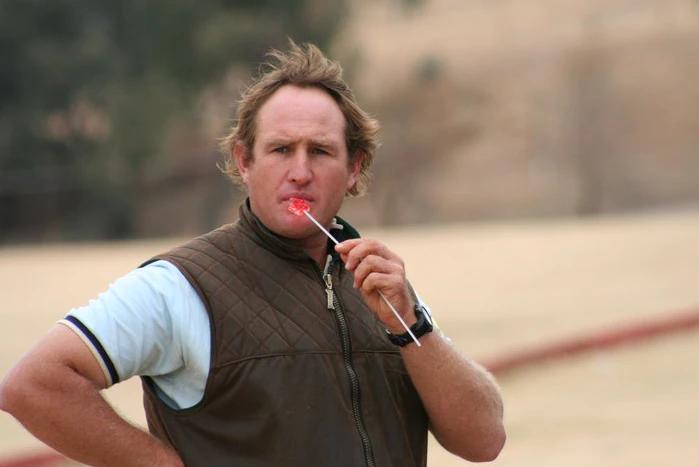
The detection of Australian bat lyssavirus (ABLV) in two horses on a Queensland property is a concern for veterinarians and horse owners alike, according to the Australian Veterinary Association.
Biosecurity Queensland quarantined a property in the Southern Downs last month after a horse tested positive for ABLV – the first known case of ABLV in this species.
According to a statement by NSW Chief Veterinary Officer Ian Roth, the yearling was initially off-colour with subtle signs of dullness and ataxia. Its condition deteriorated over a period of days, demonstrating marked ataxia, head-pressing, dysphagia, hypermetria and a rectal temperature of 39°C. Within four days the horse struggled to stand. The animal drank but did not eat, and had a heart rate of 60 beats per minute. Hendra virus testing returned negative.
Five days after initial presentation the horse developed seizures and was euthanased by the veterinarian, who performed a necropsy. Histopathology of the brain revealed severe diffuse non-purulent encephalitis and myelitis. Because this finding can be seen with ABLV, testing was undertaken. Other differentials included Hendra virus, tetanus and flavivirus (thought to be possible due to a local surge of mosquitos in the preceding month). The animal tested positive for ABLV.
Prior to the death of this horse on May 11, a paddock mate displayed similar signs. This yearling, whose signs were first noted on May 2, became recumbent and developed seizures and was euthanased on May 6. Hendra and flavivirus tests were negative, but tests for ABLV have returned positive results. There are 20 other horses on the property which remains in quarantine. According to reports in the media, six people who came into contact with sick horses received post-exposure prophylaxis.
The findings have implications for any veterinarians working with horses, with the Chief Veterinary Officer urging all vets to ensure sound hygiene and biosecurity measures are routinely adopted for all contact with horses – including their saliva, blood, body fluids and equipment.
“In the past, people have become infected with the deadly lyssavirus by being scratched or bitten by a flying fox or micro-bat, and we don’t know whether a horse could infect a human or not,” said AVA spokesperson Chris Reardon.
It is also not known at this point whether horses may infect other species.
“Horse owners need to call their vet straight away if they notice any signs of illness, and keep sick horses away from people and other animals. Making sure you wash your hands and maintain good hygiene around sick horses is always a good idea, and these measures will be helpful in preventing infection from a sick horse.”
The announcement of confirmed diagnosis of ABLV in horses came in the same week that parents of a child killed by lyssavirus began an awareness campaign.
Their eight-year-old son Lincoln Flynn is believed to have contracted the virus after being scratched by a bat on Long Island in the Whitsundays. At the time it was a minor incident, and Lincoln did not inform his parents. Post-exposure prophylaxis for rabies during the incubation period (several months) may have saved his life. He died in February, the third human victim of the virus.
According to Queensland Chief Health Officer Jeanette Young, there have only been three human cases of lyssavirus – all in Queensland, and all a direct result of exposure to bats with the virus. She stressed that while there is a possibility that humans could become infected from horses, “simply patting a horse would not constitute exposure.”
Veterinarians and support staff who have any contact with bats or flying foxes should be vaccinated as a matter of course. Rabies vaccine is used to protect against classical rabies and ABLV, and post-exposure prophylaxis is simpler in people who have already received the vaccination.
ANNE FAWCETT
Infection control
- ABLV is a notifiable disease. Contact the Emergency Animal Disease Hotline on 1800 675 888.
- Assume any bat or flying fox could carry lyssavirus.
- Encourage animal owners to reduce or eliminate contact of their pets with bats or flying foxes.
- Only persons vaccinated against rabies and trained in bat handling should handle live bats.
- In the event of a scratch or bite from a bat, wash the wound thoroughly with soap and water for at least five minutes, apply antiseptic (alcohol or iodine) and seek medical advice.
- For ABLV human health information, contact your State Department of Health.
- For information on managing ABLV risk in practices, contact WorkCover.
Source: Office of the Chief Veterinary Officer, NSW.
 The detection of Australian bat lyssavirus (ABLV) in two horses on a Queensland property is a concern for veterinarians and horse owners alike, according to the Australian Veterinary Association.
Biosecurity Queensland quarantined a property in the Southern Downs last month after a horse tested positive for ABLV – the first known case of ABLV in this species.
According to a statement by NSW Chief Veterinary Officer Ian Roth, the yearling was initially off-colour with subtle signs of dullness and ataxia. Its condition deteriorated over a period of days, demonstrating marked ataxia, head-pressing, dysphagia, hypermetria and a rectal temperature of 39°C. Within four days the horse struggled to stand. The animal drank but did not eat, and had a heart rate of 60 beats per minute. Hendra virus testing returned negative.
Five days after initial presentation the horse developed seizures and was euthanased by the veterinarian, who performed a necropsy. Histopathology of the brain revealed severe diffuse non-purulent encephalitis and myelitis. Because this finding can be seen with ABLV, testing was undertaken. Other differentials included Hendra virus, tetanus and flavivirus (thought to be possible due to a local surge of mosquitos in the preceding month). The animal tested positive for ABLV.
Prior to the death of this horse on May 11, a paddock mate displayed similar signs. This yearling, whose signs were first noted on May 2, became recumbent and developed seizures and was euthanased on May 6. Hendra and flavivirus tests were negative, but tests for ABLV have returned positive results. There are 20 other horses on the property which remains in quarantine. According to reports in the media, six people who came into contact with sick horses received post-exposure prophylaxis.
The findings have implications for any veterinarians working with horses, with the Chief Veterinary Officer urging all vets to ensure sound hygiene and biosecurity measures are routinely adopted for all contact with horses – including their saliva, blood, body fluids and equipment.
“In the past, people have become infected with the deadly lyssavirus by being scratched or bitten by a flying fox or micro-bat, and we don’t know whether a horse could infect a human or not,” said AVA spokesperson Chris Reardon.
It is also not known at this point whether horses may infect other species.
“Horse owners need to call their vet straight away if they notice any signs of illness, and keep sick horses away from people and other animals. Making sure you wash your hands and maintain good hygiene around sick horses is always a good idea, and these measures will be helpful in preventing infection from a sick horse.”
The announcement of confirmed diagnosis of ABLV in horses came in the same week that parents of a child killed by lyssavirus began an awareness campaign.
Their eight-year-old son Lincoln Flynn is believed to have contracted the virus after being scratched by a bat on Long Island in the Whitsundays. At the time it was a minor incident, and Lincoln did not inform his parents. Post-exposure prophylaxis for rabies during the incubation period (several months) may have saved his life. He died in February, the third human victim of the virus.
According to Queensland Chief Health Officer Jeanette Young, there have only been three human cases of lyssavirus – all in Queensland, and all a direct result of exposure to bats with the virus. She stressed that while there is a possibility that humans could become infected from horses, “simply patting a horse would not constitute exposure.”
Veterinarians and support staff who have any contact with bats or flying foxes should be vaccinated as a matter of course. Rabies vaccine is used to protect against classical rabies and ABLV, and post-exposure prophylaxis is simpler in people who have already received the vaccination.
ANNE FAWCETT
Infection control
The detection of Australian bat lyssavirus (ABLV) in two horses on a Queensland property is a concern for veterinarians and horse owners alike, according to the Australian Veterinary Association.
Biosecurity Queensland quarantined a property in the Southern Downs last month after a horse tested positive for ABLV – the first known case of ABLV in this species.
According to a statement by NSW Chief Veterinary Officer Ian Roth, the yearling was initially off-colour with subtle signs of dullness and ataxia. Its condition deteriorated over a period of days, demonstrating marked ataxia, head-pressing, dysphagia, hypermetria and a rectal temperature of 39°C. Within four days the horse struggled to stand. The animal drank but did not eat, and had a heart rate of 60 beats per minute. Hendra virus testing returned negative.
Five days after initial presentation the horse developed seizures and was euthanased by the veterinarian, who performed a necropsy. Histopathology of the brain revealed severe diffuse non-purulent encephalitis and myelitis. Because this finding can be seen with ABLV, testing was undertaken. Other differentials included Hendra virus, tetanus and flavivirus (thought to be possible due to a local surge of mosquitos in the preceding month). The animal tested positive for ABLV.
Prior to the death of this horse on May 11, a paddock mate displayed similar signs. This yearling, whose signs were first noted on May 2, became recumbent and developed seizures and was euthanased on May 6. Hendra and flavivirus tests were negative, but tests for ABLV have returned positive results. There are 20 other horses on the property which remains in quarantine. According to reports in the media, six people who came into contact with sick horses received post-exposure prophylaxis.
The findings have implications for any veterinarians working with horses, with the Chief Veterinary Officer urging all vets to ensure sound hygiene and biosecurity measures are routinely adopted for all contact with horses – including their saliva, blood, body fluids and equipment.
“In the past, people have become infected with the deadly lyssavirus by being scratched or bitten by a flying fox or micro-bat, and we don’t know whether a horse could infect a human or not,” said AVA spokesperson Chris Reardon.
It is also not known at this point whether horses may infect other species.
“Horse owners need to call their vet straight away if they notice any signs of illness, and keep sick horses away from people and other animals. Making sure you wash your hands and maintain good hygiene around sick horses is always a good idea, and these measures will be helpful in preventing infection from a sick horse.”
The announcement of confirmed diagnosis of ABLV in horses came in the same week that parents of a child killed by lyssavirus began an awareness campaign.
Their eight-year-old son Lincoln Flynn is believed to have contracted the virus after being scratched by a bat on Long Island in the Whitsundays. At the time it was a minor incident, and Lincoln did not inform his parents. Post-exposure prophylaxis for rabies during the incubation period (several months) may have saved his life. He died in February, the third human victim of the virus.
According to Queensland Chief Health Officer Jeanette Young, there have only been three human cases of lyssavirus – all in Queensland, and all a direct result of exposure to bats with the virus. She stressed that while there is a possibility that humans could become infected from horses, “simply patting a horse would not constitute exposure.”
Veterinarians and support staff who have any contact with bats or flying foxes should be vaccinated as a matter of course. Rabies vaccine is used to protect against classical rabies and ABLV, and post-exposure prophylaxis is simpler in people who have already received the vaccination.
ANNE FAWCETT
Infection control



